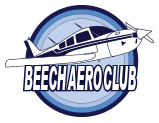What is a good way for me to clean off filiform corrosion (worm tracks), or other small corrosion spots? What is a good way to do touch-up painting?
From Jerry Kaidor:
Had a good time today at the airport, touching up the Sundowner’s paint. My neighbor Mike came to watch, and allowed as to how he was taking his plane for a complete repaint next month – for $13,000! True, $3000 of that was for a new nose gear door. Well, I ain’t got $10K for a repaint, so I guess I gotta take care of what I got….
One of the things I look for during preflight is little bits of filiform corrosion under the paint. Some few had accumulated during the year, and today I went out to take care of them.
First, I took the paint and corrosion off with a Dremel Moto-Tool equipped with a #511 “Finishing Abrasive Buff”. When you buy this, it comes in a package of two. One is brown, the other one is grey. You take the grey one and toss it, or put it in your automotive toolkit: it has silicon carbide grit, which is a no-no for use on aircraft aluminum. The other one, the good one, is Aluminum Oxide. This is documented on the Dremel website. The abrasive buff is an amazing tool – simply ideal for removing paint and corrosion. A typical filiform spot cleans up to bright metal in a matter of seconds. I made sure to run the Dremel at it’s lowest setting; the buff is only rated for 15,000 RPM.
Next, I cleaned off each spot with lacquer thinner, followed by water. Then I applied “Alumiprep 33” with a Q-tip. Scrub, scrub, scrub. Then rinsed each spot with water from a small bucket and a wet paper towel, and dried. Then used “Alodine 1201” on each spot with another Q-tip. Then rinsed again.
Now, I was ready for the airbrush work. Using my trusty old Badger 350 external-mix airbrush (available at hobby shops for about $40). I applied zinc chromate primer, which actually came out of a spray can. The airbrush is such a superior tool for this sort of work, that I judged it worthwhile to spray some paint out of the spray can into the airbrush bottle. With the tiny pattern and tight control of the airbrush, I did not have to mask anything; even with a brisk breeze blowing out on the ramp. When the zinc chromate dried, I top-coated with some auto paint that I’ve found that matches the white of the plane pretty closely. Same deal, sprayed a half ounce or so from the spray can into an airbrush
bottle.
Most of the job was done with stuff I already had. Just for yucks, I added up what you would need to do this job if you started out with nothing, and it all came to about $310 plus tax. That includes a new Dremel, a new Badger, and a new air compressor to run the Badger. That’s about $9,690.00 less than Mike’s new paint job.
EDITOR’s NOTE:
Many good pointers here. You might also want to read the BAC info on the newer two-part epoxy primers. They seem to have a much higher bond strength with the aluminum substrate, especially on leading edges, compared to the traditional zinc chromate primers.
